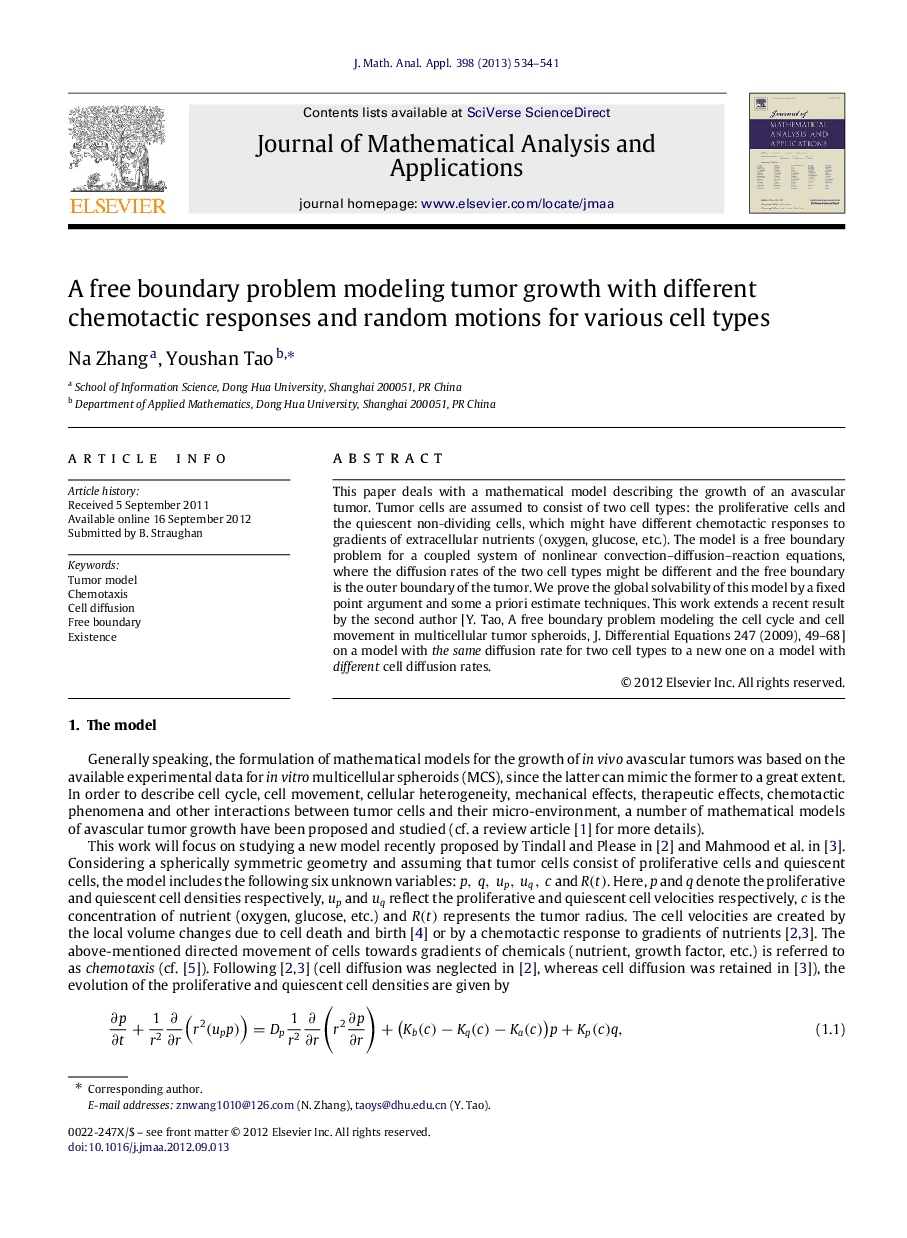| Article ID | Journal | Published Year | Pages | File Type |
|---|---|---|---|---|
| 4617074 | Journal of Mathematical Analysis and Applications | 2013 | 8 Pages |
This paper deals with a mathematical model describing the growth of an avascular tumor. Tumor cells are assumed to consist of two cell types: the proliferative cells and the quiescent non-dividing cells, which might have different chemotactic responses to gradients of extracellular nutrients (oxygen, glucose, etc.). The model is a free boundary problem for a coupled system of nonlinear convection–diffusion–reaction equations, where the diffusion rates of the two cell types might be different and the free boundary is the outer boundary of the tumor. We prove the global solvability of this model by a fixed point argument and some a priori estimate techniques. This work extends a recent result by the second author [Y. Tao, A free boundary problem modeling the cell cycle and cell movement in multicellular tumor spheroids, J. Differential Equations 247 (2009), 49–68] on a model with the same diffusion rate for two cell types to a new one on a model with different cell diffusion rates.
